An engaging opening sentence with varied starters
Practical, actionable advice
Include "balcony garden" or related terms in headings
Natural, motivational language
Word count of 90-110 words per paragraph
Transforming your balcony into a thriving garden oasis doesn't require extensive space or professional expertise. Modern balcony gardening has evolved far beyond simple potted plants, embracing innovative vertical solutions, sustainable practices, and creative design approaches that maximize every square inch of available space . The 2025 gardening trends emphasize vertical gardening, eco-friendly materials, and multifunctional spaces that serve as extensions of indoor living areas . From aromatic herb gardens that enhance your culinary adventures to stunning vertical walls that create natural privacy screens, balcony gardens offer endless possibilities for urban dwellers seeking connection with nature. Whether you're growing fresh vegetables for your kitchen or creating a peaceful retreat filled with flowering plants, even the smallest balcony can become a productive and beautiful garden sanctuary . These creative balcony garden ideas will inspire you to maximize your outdoor space while creating a personalized green haven that reflects your style and meets your gardening goals.
1. Vertical Balcony Garden Wall Systems
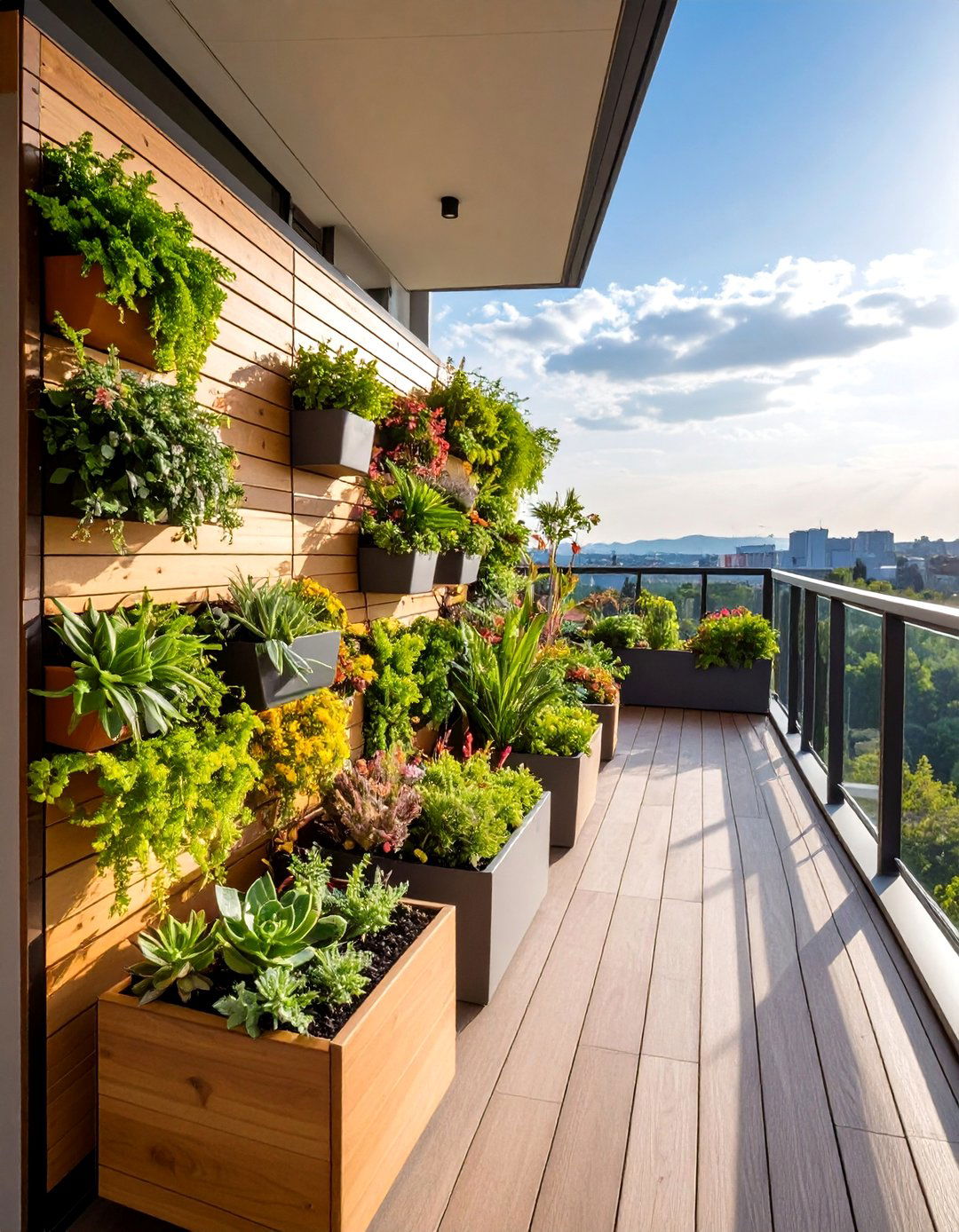
Creating a living wall transforms any balcony into a stunning vertical garden showcase. Attach pots, shelves, or trellises to walls, and add hooks for hanging plants if your balcony has a ceiling . Use modular planters to create patterns or designs with plants, mixing succulents, ferns, and air plants to add variety and texture . This space-saving solution allows you to grow dozens of plants without sacrificing precious floor area. Choose lightweight containers and ensure proper drainage to prevent water damage. Arrange a pallet board and hang several pots on it, placing it where it will receive adequate sunlight . Install a simple irrigation system to make watering easier, and select plants with similar light and water requirements for each section.
2. Herb Balcony Garden for Culinary Adventures
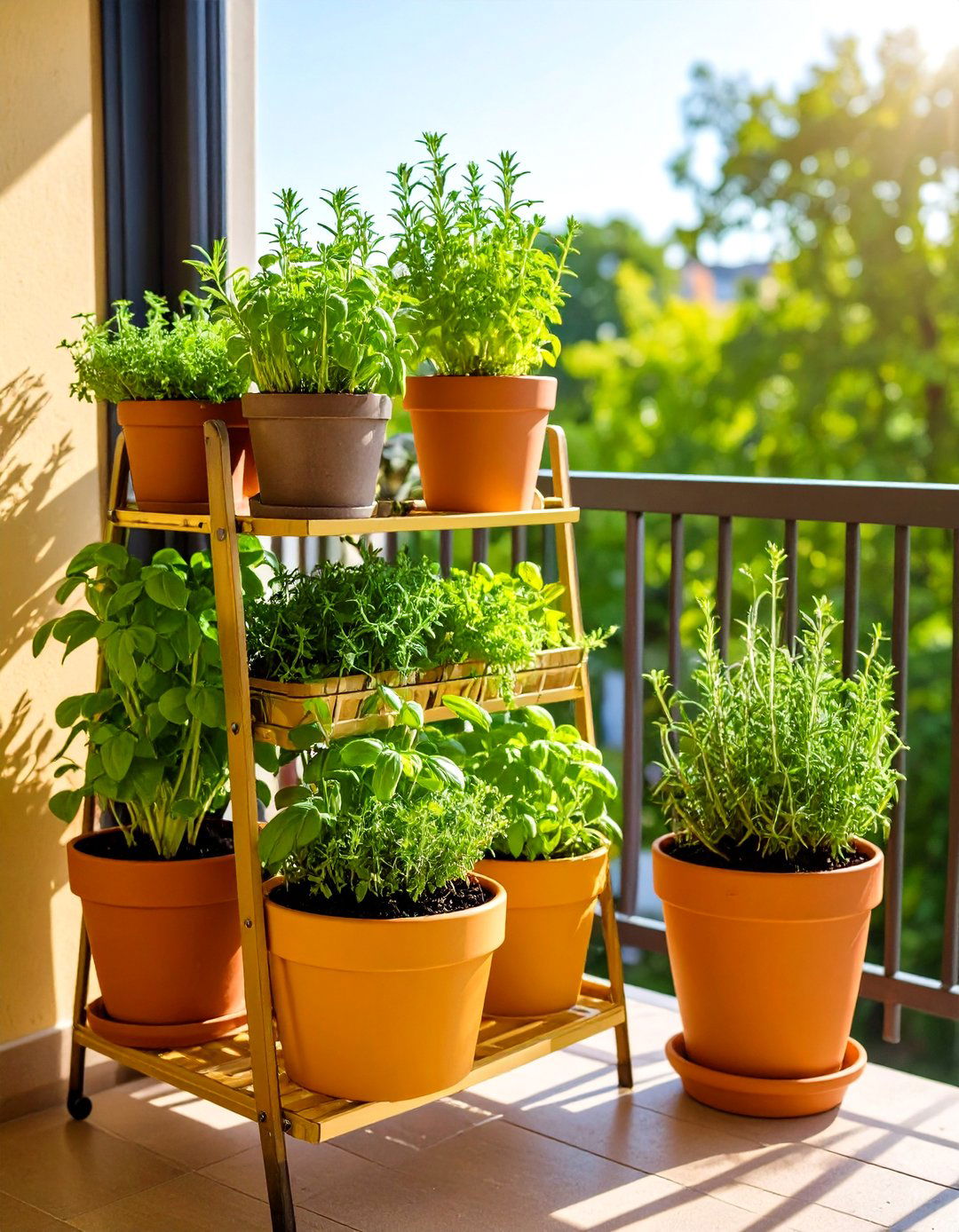
Establishing a dedicated herb garden brings fresh flavors directly to your kitchen doorstep. Most herbs flourish on sunny balconies and require very little space to grow, with basil and parsley being among the most useful varieties . Choose containers at least 6 inches deep, but preferably a foot deep, especially for herbs in the Apiaceae family like cilantro, dill, and parsley . Perennial herbs in small pots can easily be moved into the kitchen window when winter arrives . Create a portable herb station using a rolling cart or tiered stand that can be repositioned to follow the sun. Include hardy varieties like rosemary, chives, and parsley that can grow year-round with proper care . Position frequently used herbs like basil and mint within easy reach of your kitchen door.
3. Container Balcony Garden with Seasonal Rotation
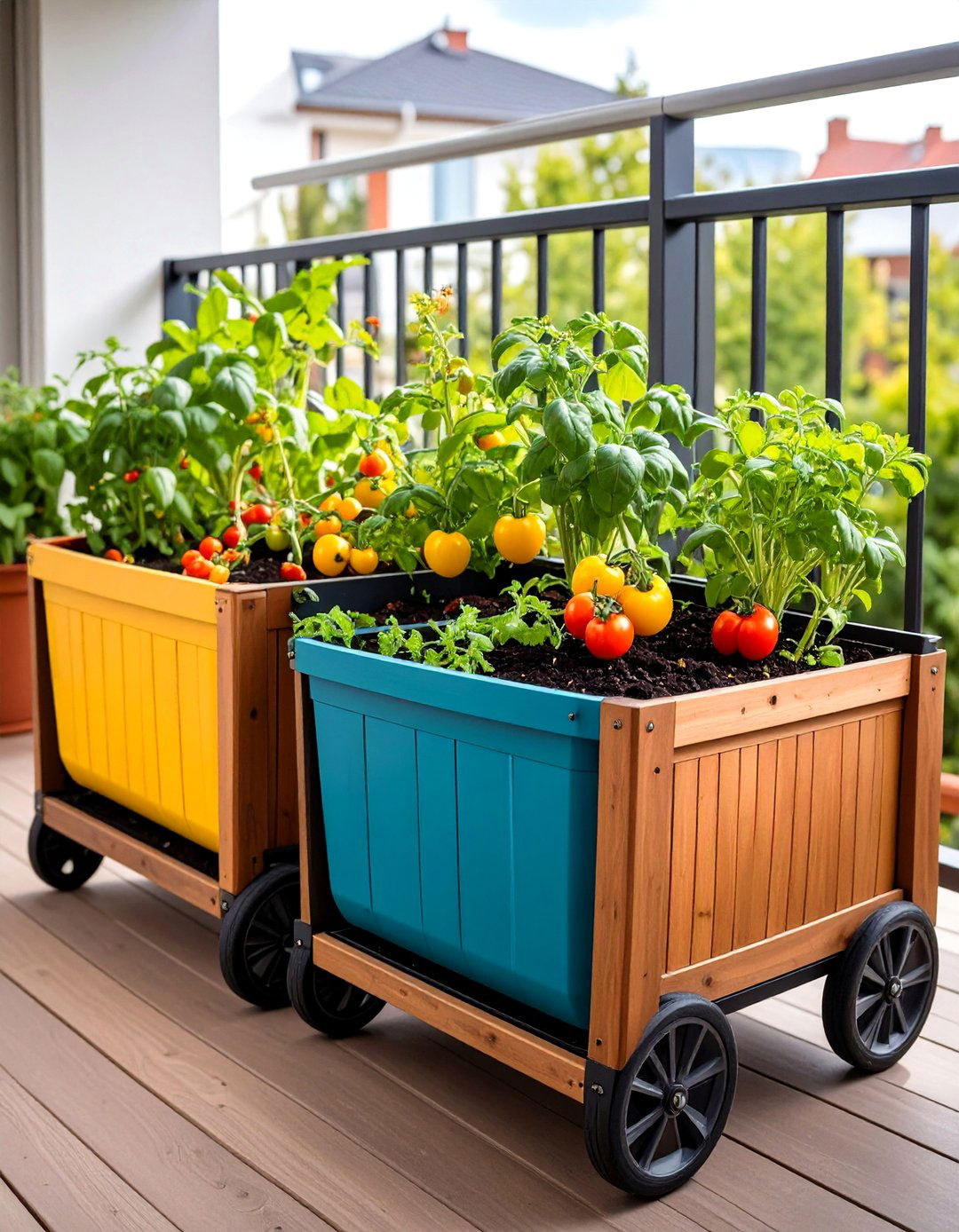
Designing a container garden system allows for easy seasonal plant changes and optimal space utilization. Plastic and fiberglass containers are ideal for balcony gardens because they're lighter than terracotta while offering vast style options . Focus on bush-type or compact plant varieties and utilize vining plants that can be trained to grow vertically with trellises . Create visual interest by combining containers of different heights and sizes throughout your balcony space. Choose vegetables like cherry tomatoes, peppers, and cucumbers that produce abundant harvests on smaller plants . Implement a rotation system where cool-season crops like lettuce and spinach are replaced with warm-season vegetables as temperatures change. Use wheeled plant caddies to easily move containers for optimal sun exposure.
4. Hanging Balcony Garden with Cascading Plants

Maximizing overhead space creates a dramatic garden display while preserving floor area for seating and activities. Hanging baskets and outdoor railing baskets are real space savers that can accommodate everything from herbs to trailing vegetables . Install ceiling hooks or suspension systems that can safely support the weight of water-filled containers. Use trellises and hanging planters to grow exotic plants like orchids, bromeliads, and ferns for a tropical paradise effect . Choose trailing varieties like cherry tomatoes, strawberries, and cascading petunias that naturally spill over container edges. Position hanging gardens at varying heights to create depth and visual interest. Ensure easy access for watering and maintenance by installing pulley systems or using lightweight, removable containers.
5. Succulent Balcony Garden for Low-Maintenance Beauty
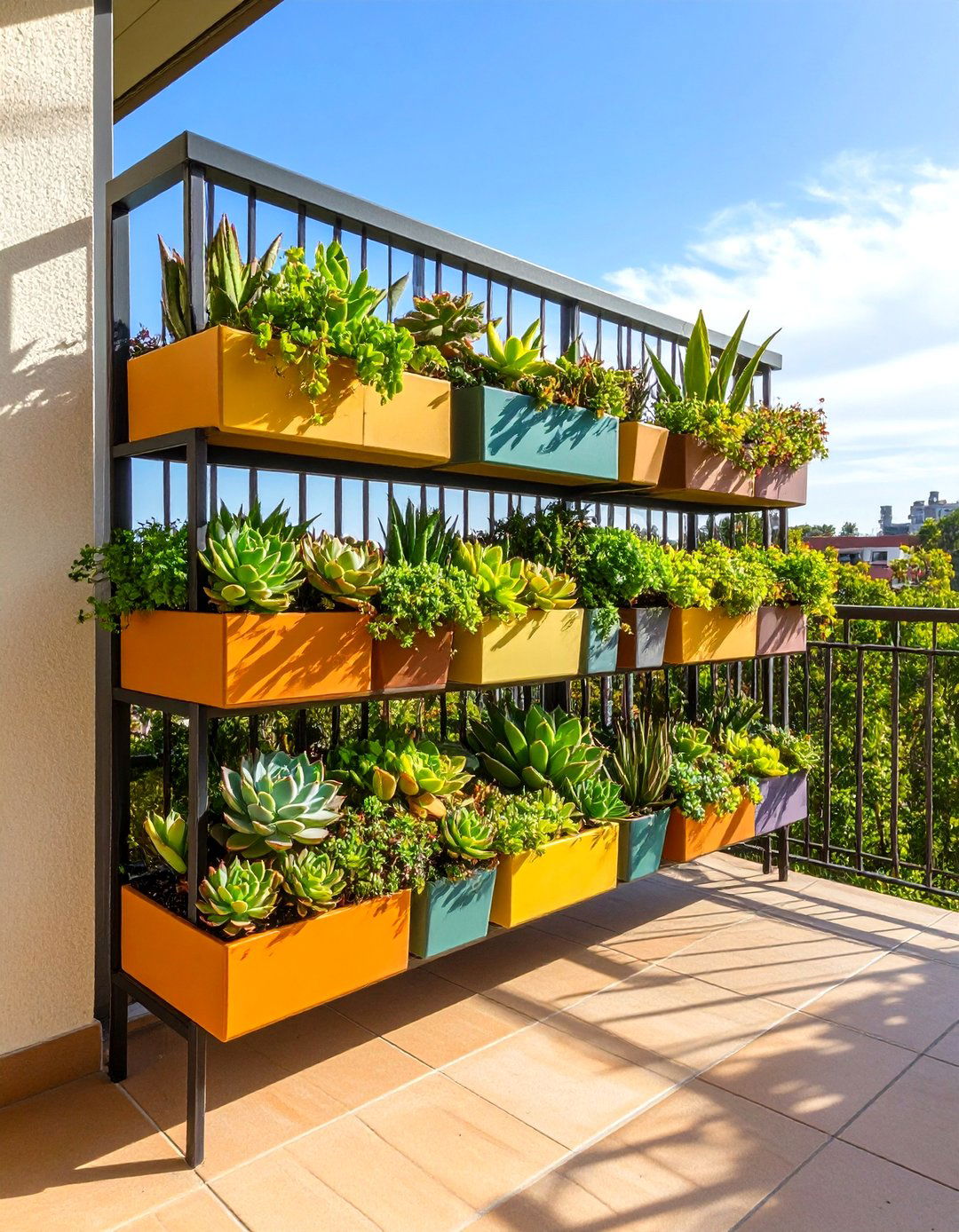
Developing a succulent-focused garden provides year-round beauty with minimal care requirements. Succulents thrive in small balconies with minimal care, needing infrequent watering and tolerating various light conditions. Arrange succulents in shallow containers or create dramatic displays using tiered arrangements and geometric planters. These drought-tolerant plants are perfect for busy lifestyles and travel-friendly gardening. Choose drought-tolerant succulents for hot, dry areas, making them ideal for sunny balconies . Combine different textures, colors, and growth habits to create visually striking arrangements that require watering only once or twice monthly. Use decorative stones, sand, or gravel as top dressing to enhance the desert aesthetic while preventing soil erosion.
6. Railing Balcony Garden with Space-Saving Planters
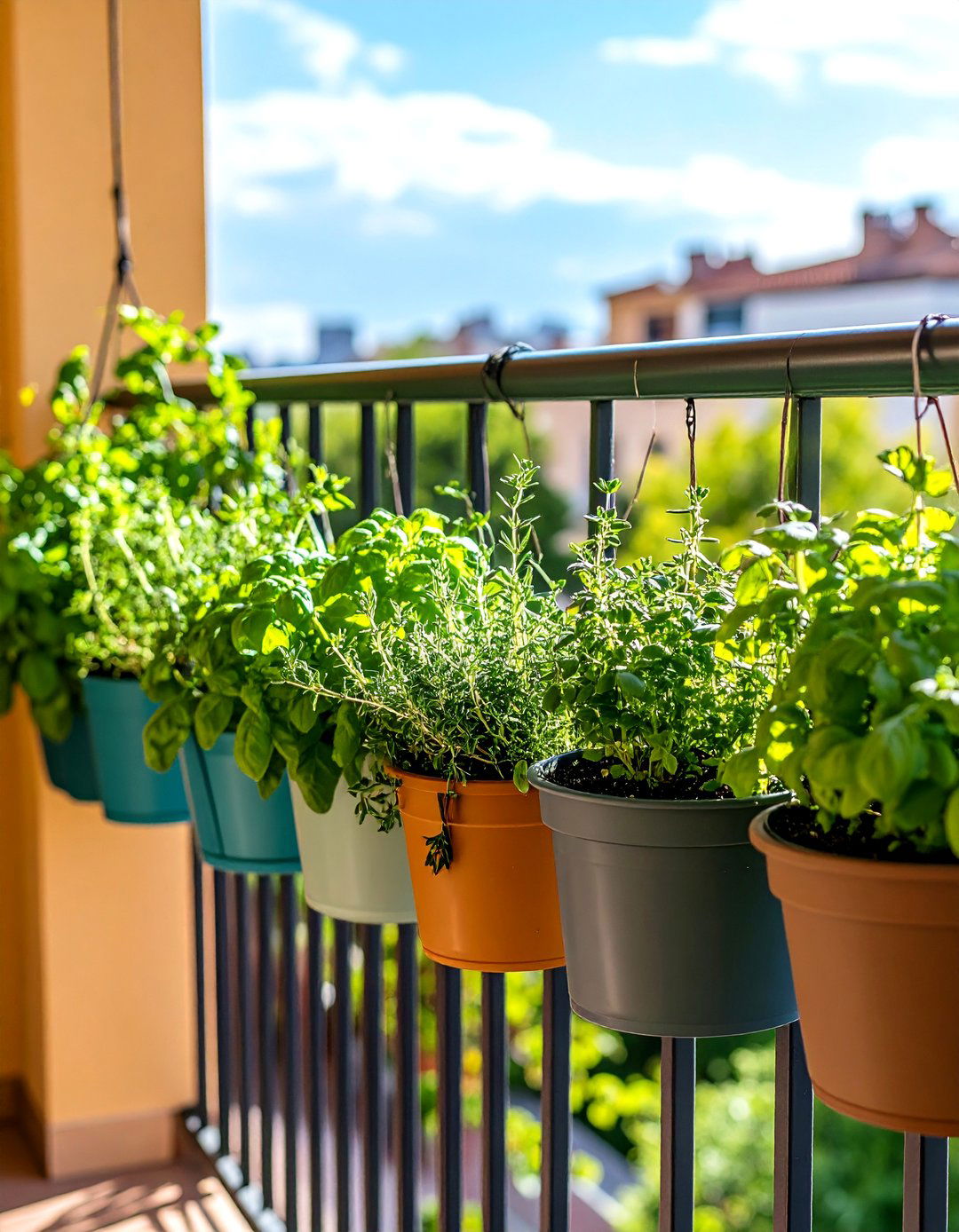
Transforming balcony railings into productive growing space doubles your planting area without consuming floor space. Cover railings with chicken wire to support climbing plants, or purchase plant hangers that attach to railing tops . Install deck railing planters that attach directly to railing structures, creating vertical gardens while providing practical cultivation space. Choose shallow-rooted plants like herbs, lettuce, and strawberries that thrive in railing containers. Ensure containers have secure mounting systems to prevent accidents during windy conditions. Use railing space as a hanging and vertical garden to save room for seating areas . Install drip irrigation systems along railings to maintain consistent moisture levels. Position taller plants on corners and shorter varieties in between for balanced visual appeal.
7. Privacy Screen Balcony Garden with Living Walls

Creating natural privacy screens combines functionality with beautiful garden displays. Add climbing plants on trellises for natural privacy screens, or use bamboo and reed fencing for instant privacy with a cozy feel . Tall plants, climbing vines, and shrubs help wave goodbye to nosy neighbors while claiming more personal space. Install trellises or mesh panels where climbing plants like jasmine, clematis, or morning glories can flourish. Your best options include jasmine or clematis, which provide both privacy and beautiful blooms . Create layered privacy by combining tall potted plants with climbing varieties and hanging baskets. Choose fast-growing options like bamboo or ornamental grasses for quick screening. Position privacy plants strategically to block sight lines while maintaining airflow and natural light.
8. Themed Mediterranean Balcony Garden

Establishing a Mediterranean-inspired garden brings warm, sun-loving plants and relaxed styling to your balcony. Mediterranean themes feature terracotta pots and herbs, creating authentic regional garden aesthetics . Vibrant geraniums in classic terracotta pots set the tone, complemented by large foliage plants and Mediterranean accessories . Include classic herbs like rosemary, oregano, thyme, and lavender that thrive in hot, dry conditions. Mediterranean herbs like thyme and rosemary love the sun, cope well with short dry spells, and need very little fertilizer . Add olive trees in large containers as striking focal points, and incorporate decorative elements like ceramic tiles, wrought iron accents, and colorful textiles. Use drought-tolerant flowering plants like bougainvillea or hibiscus to create vibrant color displays.
9. Vegetable Balcony Garden for Fresh Produce
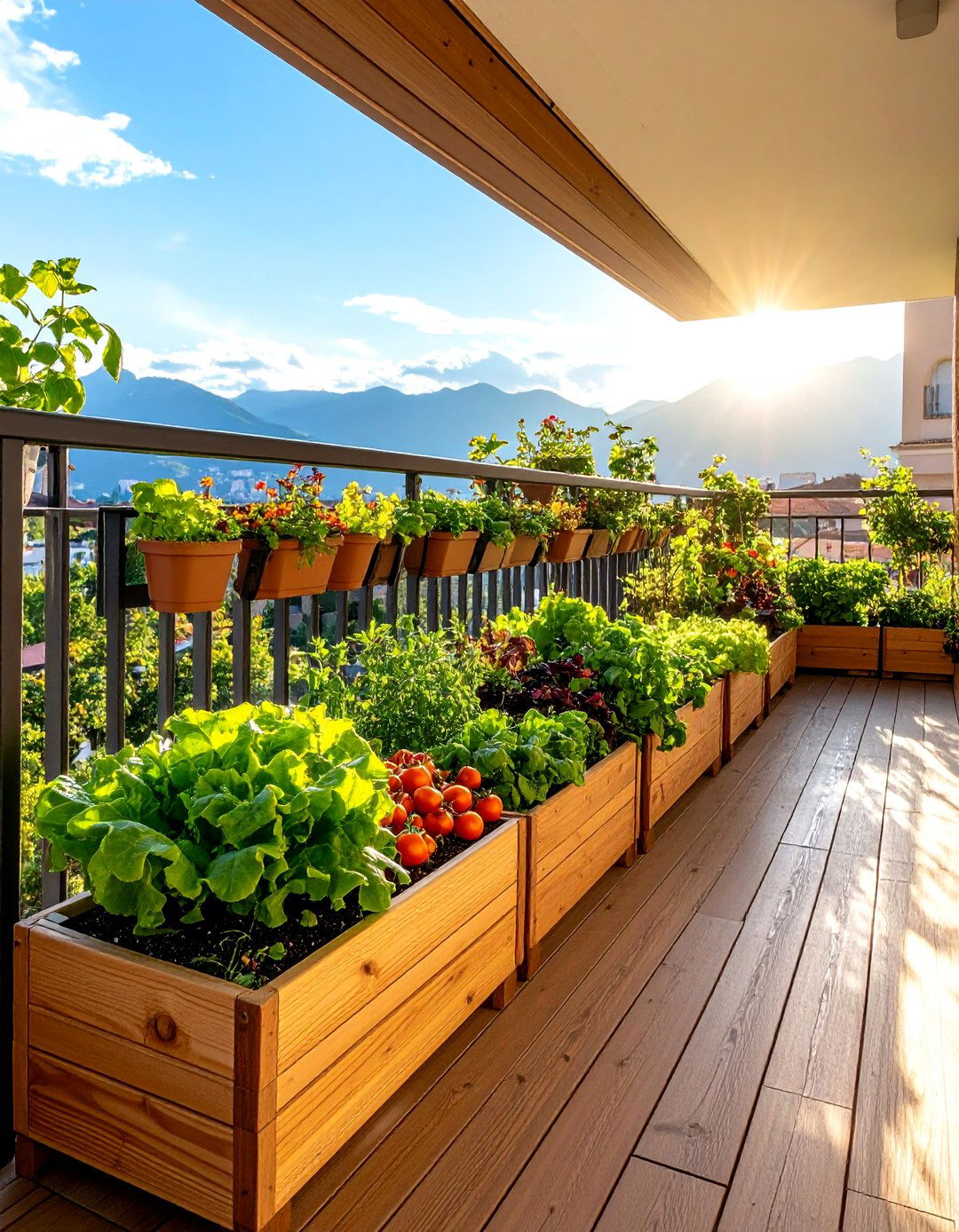
Growing your own vegetables provides fresh, organic produce right outside your kitchen door. Easy vegetables for containers include lettuce, leafy greens, root vegetables, beans, and peas that stay compact and productive . Cherry tomatoes produce abundant fruit on smaller plants, while peppers and cucumbers work excellently in containers . Select determinate varieties that stay compact rather than sprawling indeterminate types. Choose deep pots for root vegetables like carrots, radishes, and potatoes to accommodate their growing needs . Plan succession planting to ensure continuous harvests throughout the growing season. Start with beginner-friendly options like radishes and lettuce that grow quickly and produce multiple harvests . Use companion planting techniques to maximize space and improve plant health naturally.
10. Tropical Balcony Garden Paradise

Transforming your balcony into a tropical retreat creates an exotic escape using lush, bold plants. Create a tropical paradise using trellises and hanging planters for exotic plants like orchids, bromeliads, and ferns . Tropical themes use bold foliage plants and bright flowers to create the desired aesthetic . Include large-leaf plants like banana trees, bird of paradise, and elephant ears as dramatic focal points. Add flowering tropical plants such as hibiscus, bougainvillea, and jasmine for vibrant color and fragrance. Create an urban jungle atmosphere where French and tropical aesthetics meet . Use natural materials like bamboo, teak, and rattan for containers and furniture. Install misting systems to maintain humidity levels that tropical plants prefer. Layer plants at different heights to create depth and jungle-like density.
11. Compact Balcony Garden for Small Spaces
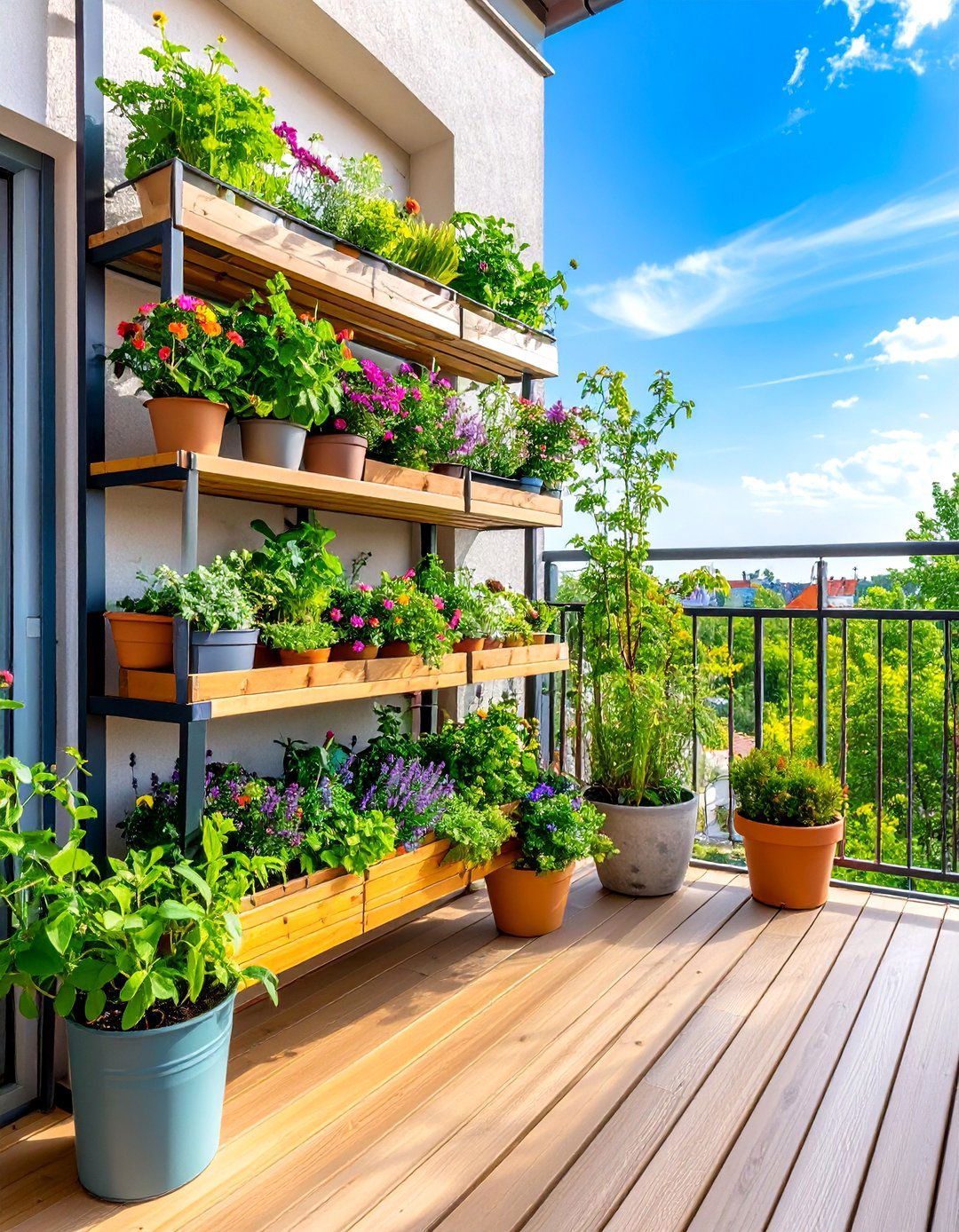
Maximizing extremely limited balcony space requires creative solutions and strategic plant selection. Vertical gardening systems utilize wall space effectively through wall planters, hanging baskets, and trellises to grow upward instead of outward. Multi-tiered plant stands create levels for displaying numerous plants in a small footprint . Choose compact varieties and dwarf cultivars that provide maximum impact without overwhelming the space. Use stackable or hanging containers to create vertical growing systems . Install fold-down shelves or tables that can be stored when not in use. Consider foldable or stackable furniture to save space when not in use, providing more room for plants . Utilize corners and edges efficiently with custom-fitted containers and triangular planters designed for tight spaces.
12. Seasonal Balcony Garden with Year-Round Interest
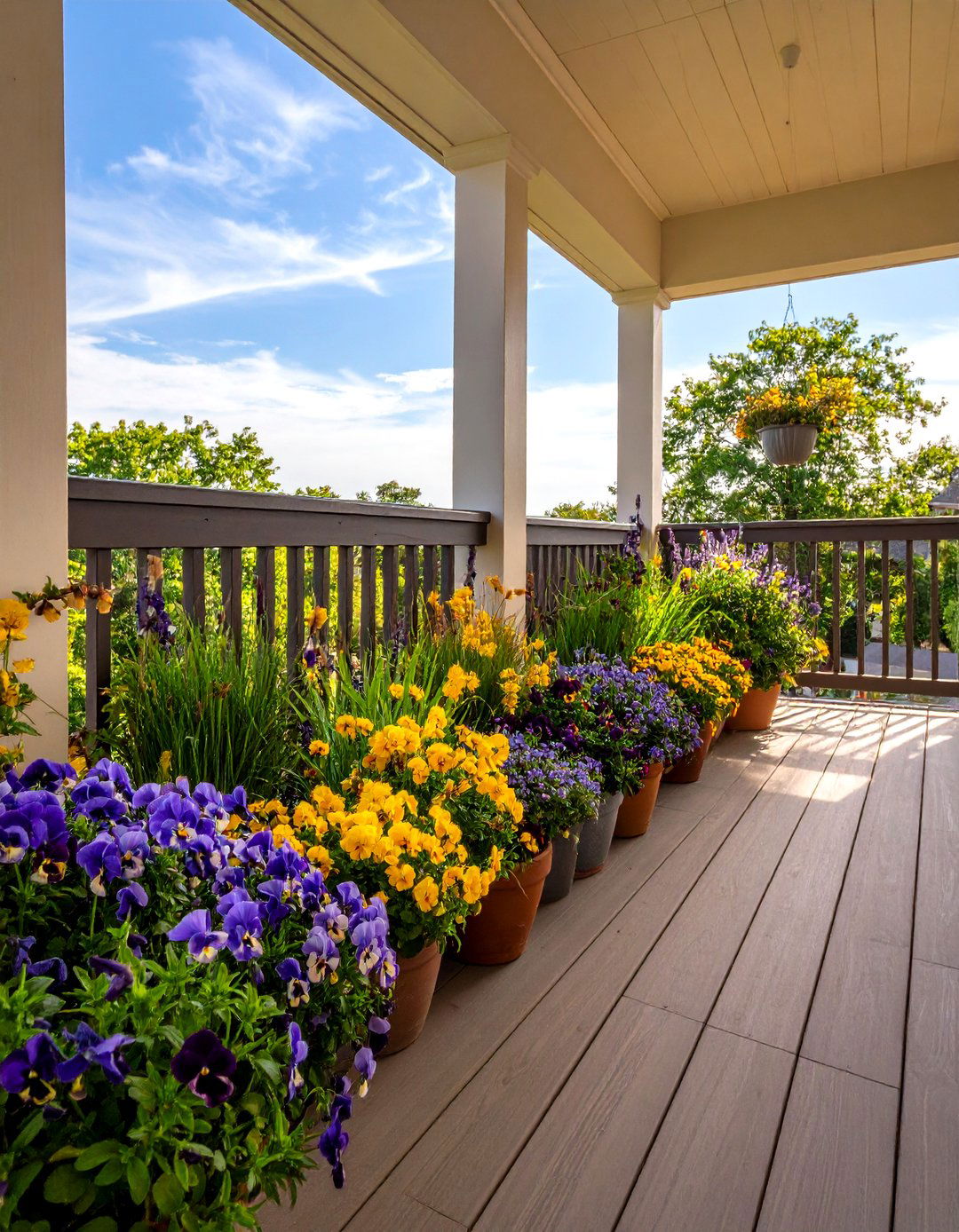
Designing a garden that provides beauty throughout all seasons ensures continuous enjoyment of your balcony space. Hardy herbs like rosemary, chives, and parsley can grow year-round with proper care . Perennial herbs in small pots can easily be moved into kitchen windows when winter arrives . Plan seasonal rotations using cool-season crops like kale and pansies for fall and winter displays. Include evergreen plants and ornamental grasses that maintain structure during dormant months. Start growing vegetables and fruit as early as March or April for extended growing seasons . Add seasonal containers with bulbs for spring flowers and holiday decorations. Use plant protection methods like cold frames or row covers to extend growing seasons naturally.
13. Aromatic Balcony Garden with Fragrant Plants
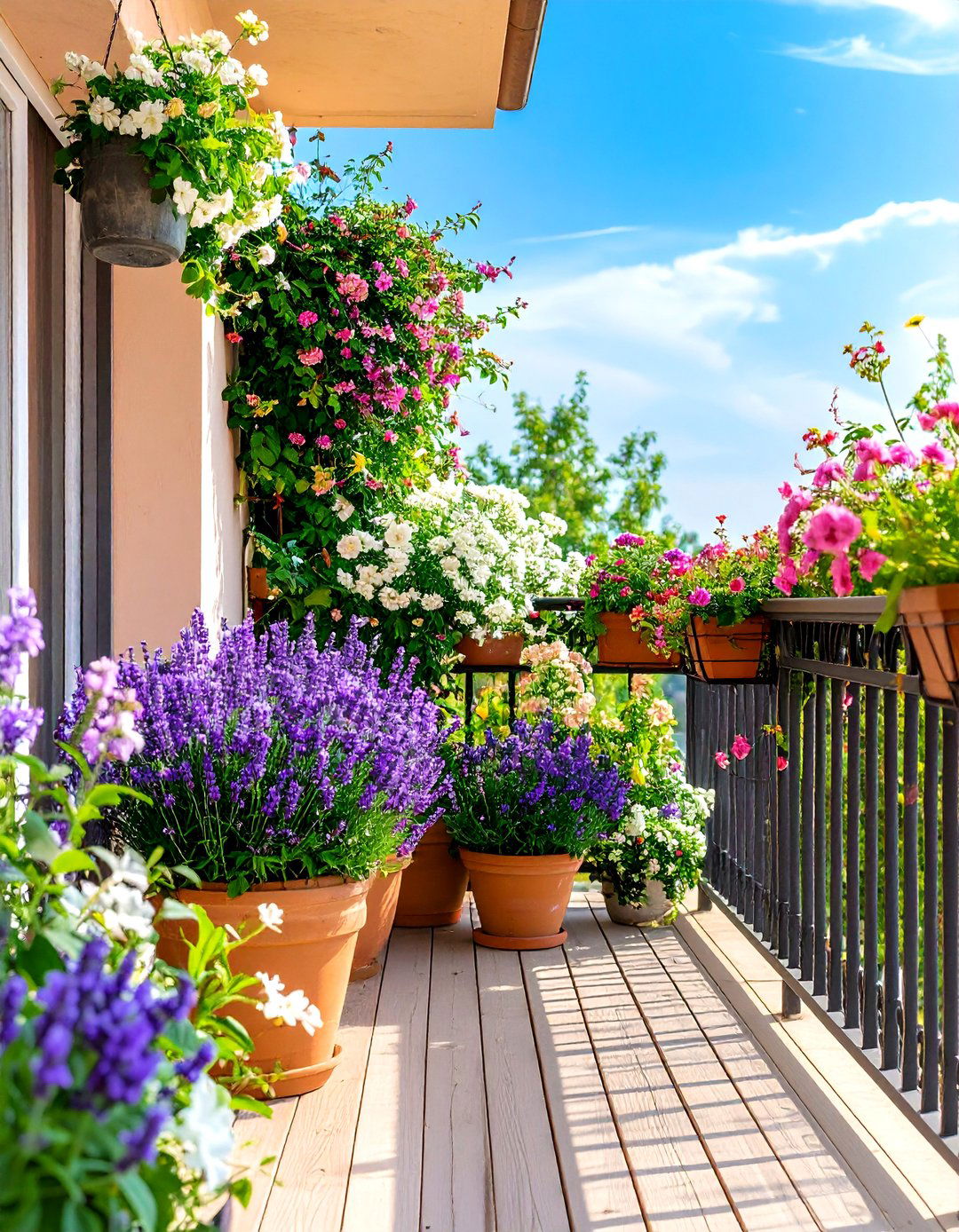
Creating a sensory garden filled with fragrant plants enhances your balcony experience through natural aromatherapy. Include fragrant herbs like mint for tea, which grows well under various lighting conditions . Add scented flowers such as lavender, jasmine, sweet alyssum, and gardenias that perfume the air naturally. Jasmine and clematis provide both beautiful blooms and delightful fragrance . Position aromatic plants near seating areas where their scents can be easily enjoyed. Include culinary herbs like basil, rosemary, and thyme that release fragrance when touched or brushed against. Mediterranean herbs like thyme and rosemary add wonderful aromas while requiring minimal care . Create evening fragrance by including night-blooming plants like moonflowers or four o'clocks that open as temperatures cool.
14. Self-Watering Balcony Garden Systems
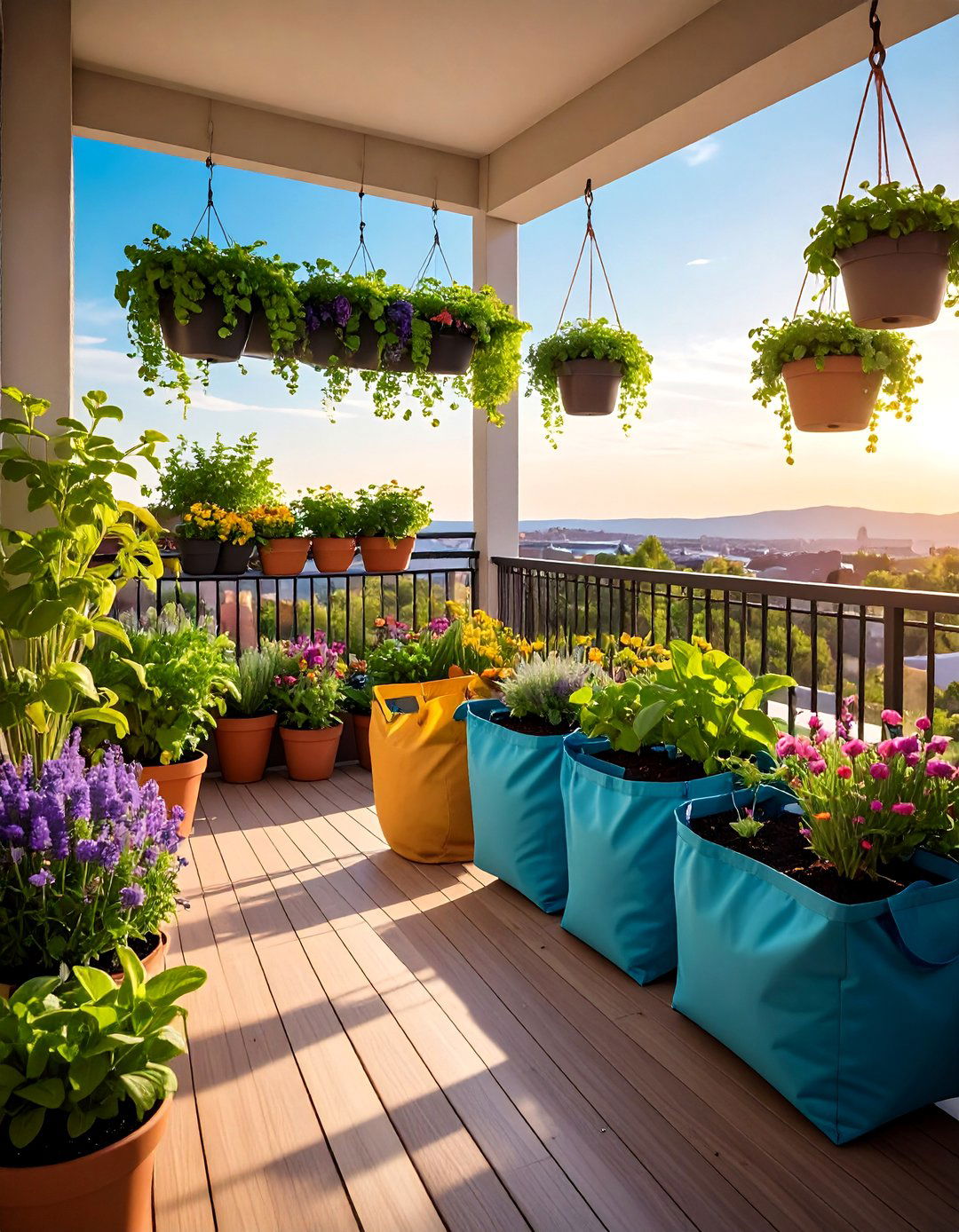
Installing automatic watering systems ensures plant health while reducing daily maintenance requirements. Innovations such as self-watering systems make it easier to maintain vertical installations, even for those with limited time . Set up drip irrigation systems using timers and emitters that deliver precise water amounts to each container. Fabric grow bags offer advantages including handles for convenient portability and easy storage after growing seasons . Install reservoir systems that store water and gradually release it to plant roots as needed. Create DIY self-watering containers using plastic bottles, wicking systems, and water reservoirs. Use hanging gutter gardens with built-in water channels for efficient irrigation . Position rain collection systems to capture natural precipitation and supplement watering needs during dry periods.
15. Pollinator-Friendly Balcony Garden
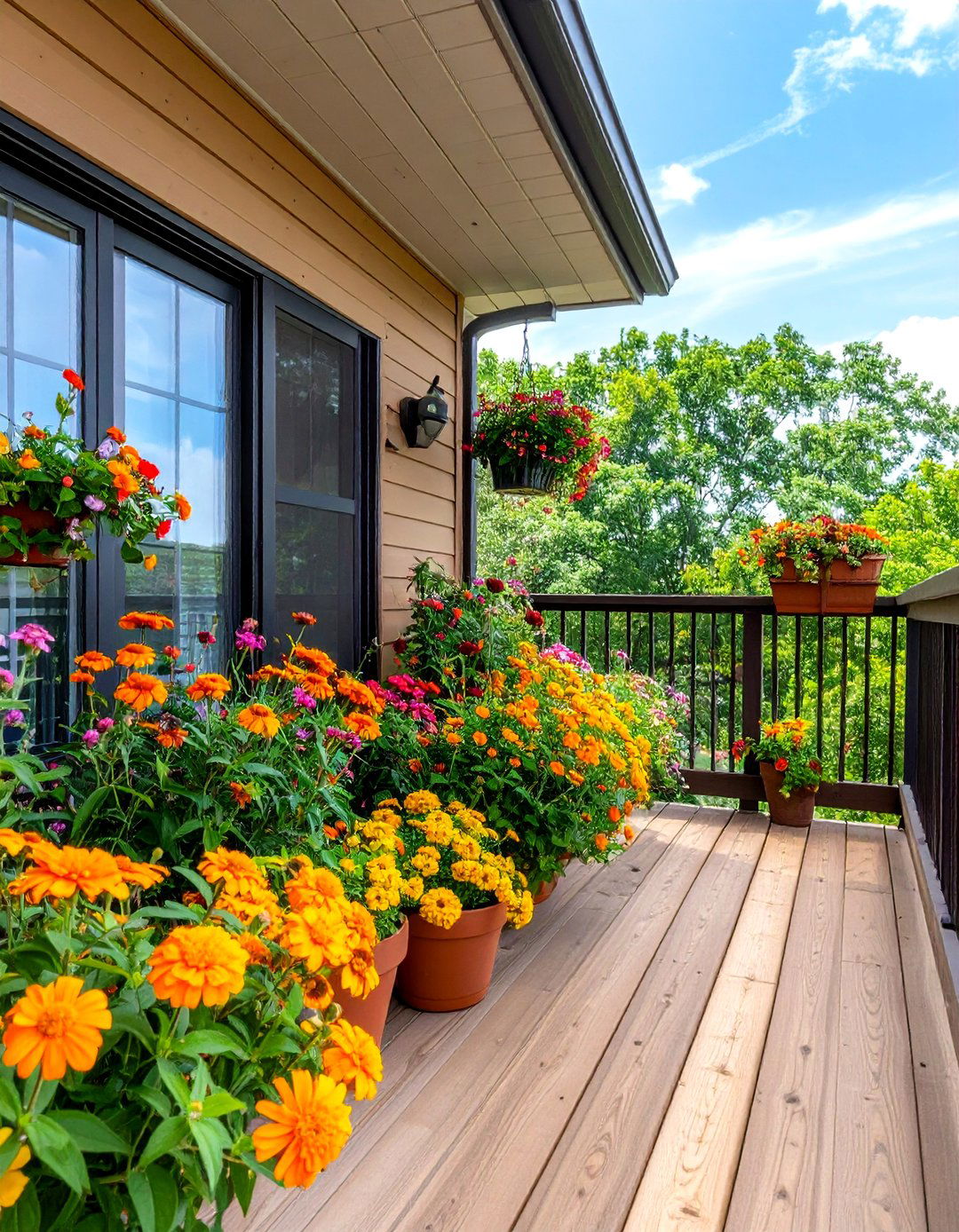
Designing a garden that attracts beneficial insects creates a thriving ecosystem while supporting local wildlife. Birds and butterflies may visit your balcony garden, adding life to your space while diverse planting schemes offer food for many species . Include native flowering plants that provide nectar sources throughout the growing season. Plant diverse schemes that offer food for many species, enhancing biodiversity in urban environments . Add plants like bee balm, salvia, marigolds, and zinnias that specifically attract pollinators. Include easy-to-grow flowers like marigolds that provide bright color while supporting beneficial insects . Install shallow water sources like small fountains or dishes that provide drinking water for visiting wildlife. Avoid pesticides and chemicals that harm beneficial insects, instead using natural pest control methods and companion planting techniques.
16. Edible Flower Balcony Garden
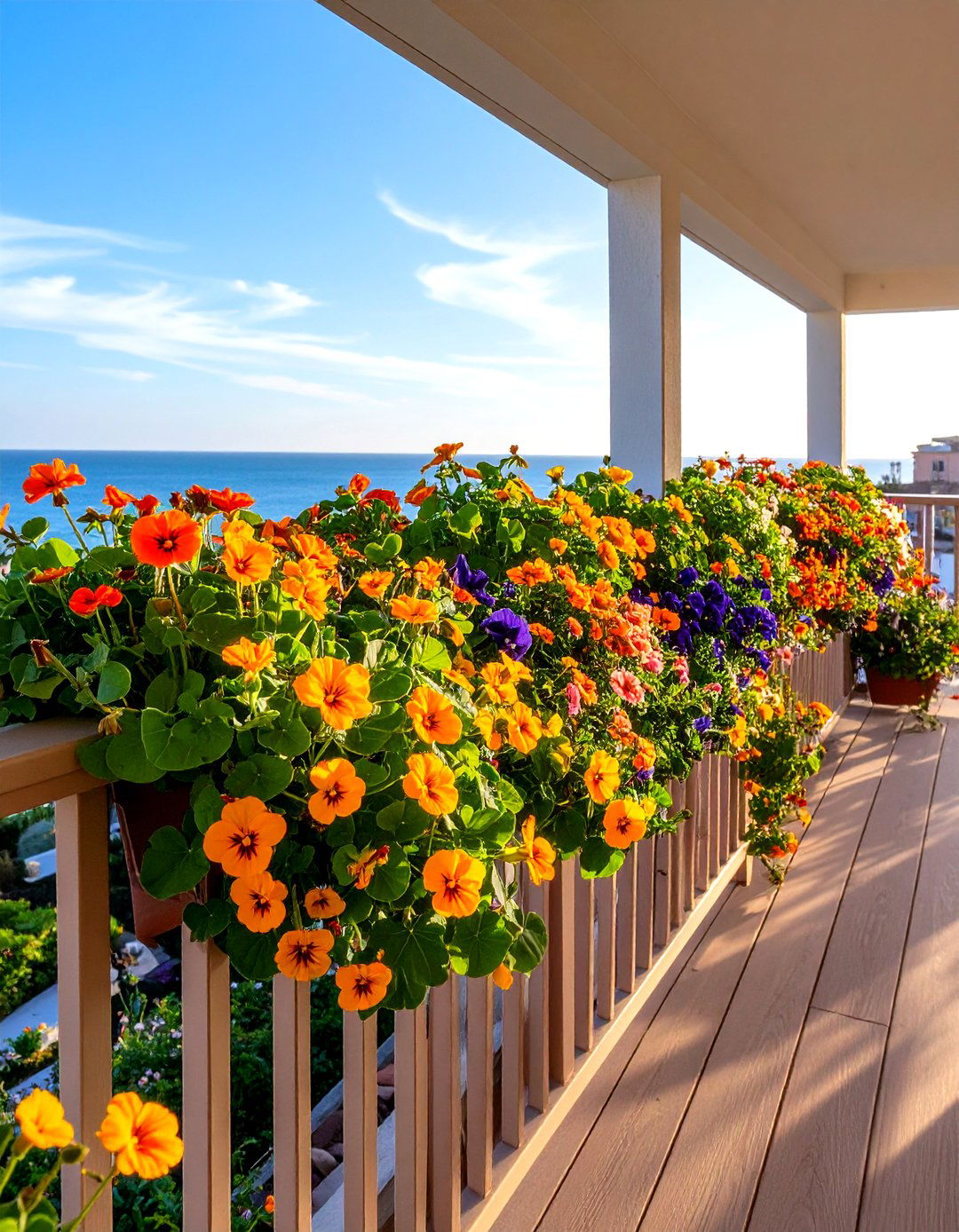
Growing edible flowers combines beauty with culinary functionality, creating gardens that feed both eyes and palate. Include nasturtiums, pansies, violas, and calendulas that add color and peppery or sweet flavors to salads. Plant easy-to-grow flowers like marigolds and other colorful options that enhance both garden beauty and culinary possibilities . Add herb flowers like chive blossoms, basil flowers, and oregano flowers that provide both seasoning and visual appeal. Choose varieties that bloom continuously throughout the growing season for constant harvest opportunities. Create containers dedicated to flowers, herbs, and edible plants that can be harvested regularly . Position edible flower gardens near kitchen access for convenient harvesting during meal preparation. Research proper harvesting techniques and edible portions to ensure safe consumption of flower varieties.
17. Drought-Tolerant Balcony Garden
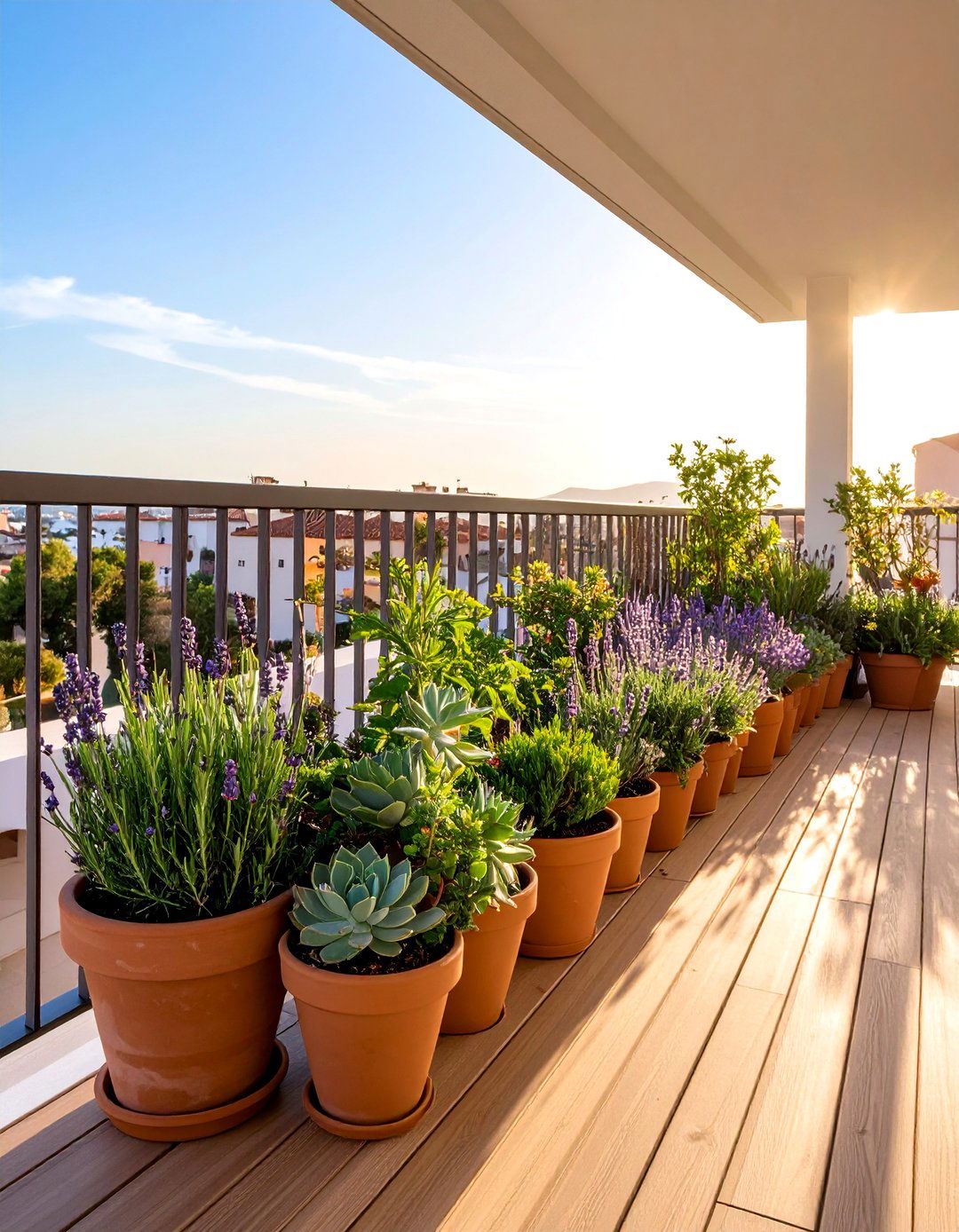
Establishing a water-wise garden reduces maintenance while creating resilient plant displays that thrive in challenging conditions. Choose drought-tolerant succulents for hot, dry areas, making them perfect for sunny balconies with minimal watering requirements . Many herbs tolerate dry spells and apparently some taste better after experiencing mild drought stress . Include Mediterranean plants like lavender, rosemary, and sage that naturally prefer drier conditions. Dwarf olive trees are perfect for balcony gardens due to their low water requirements and resistance to high winds . Use mulch and ground covers to retain soil moisture and reduce evaporation rates. Install shade structures during peak summer months to protect plants from excessive heat stress. Choose containers with water-retention properties and add water-storing crystals to potting mixes.
18. Lighting-Enhanced Balcony Garden
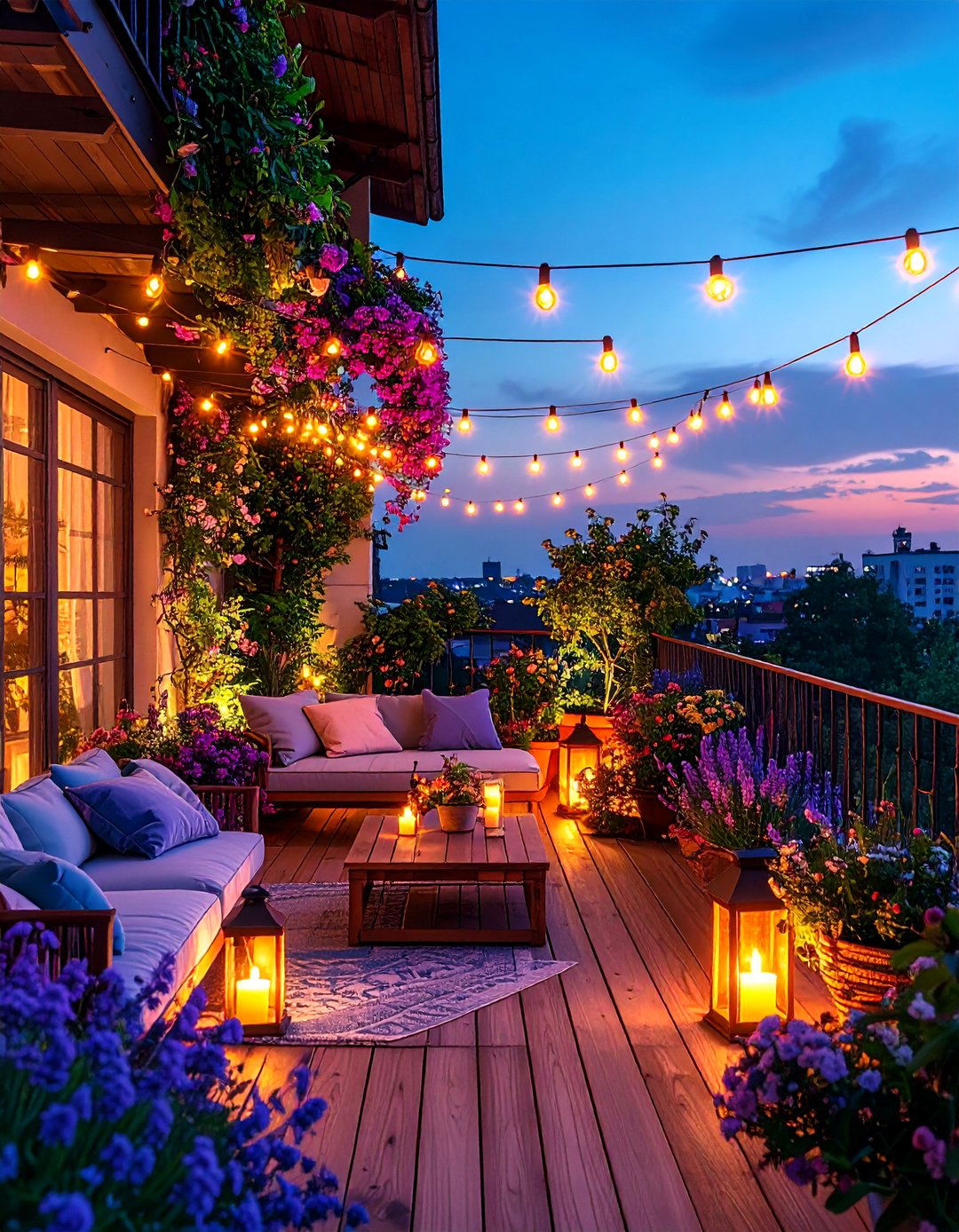
Incorporating strategic lighting extends garden enjoyment into evening hours while creating magical ambiance. String lights from branches or structures create perfect summertime dinner party setups with romantic lighting effects. LED lights provide atmospheric lighting in the evening while using minimal electricity . Solar-powered lights offer waterproof options that provide illumination without electrical connections. Install uplighting to highlight specimen plants and create dramatic shadows on walls or ceilings. Lanterns create warm and welcoming vibes, even on the coldest nights. Add pathway lighting along balcony edges for safety and visual definition. Use fairy lights or paper ball lights for natural, beachy vibes that complement garden plantings. Position lights to illuminate seating areas while avoiding light pollution that disturbs neighbors.
19. Multi-Functional Balcony Garden Space

Creating gardens that serve multiple purposes maximizes utility while maintaining beauty and functionality. Use balcony railings as hanging gardens to save room for dining areas with bistro sets . Choose furniture that serves double duty, acting as storage for outdoor cushions and planting essentials . Install fold-down tables that can be raised for dining and lowered to create more growing space. Add shelves and tables around seating areas to incorporate additional plant life . Create vertical storage solutions that hold gardening tools, supplies, and seasonal decorations. Consider foldable or stackable furniture to save space when not in use . Design moveable garden elements that can be rearranged for different activities like entertaining, relaxing, or working. Position plants strategically to provide natural windbreaks and privacy screens.
20. Cottage-Style Balcony Garden
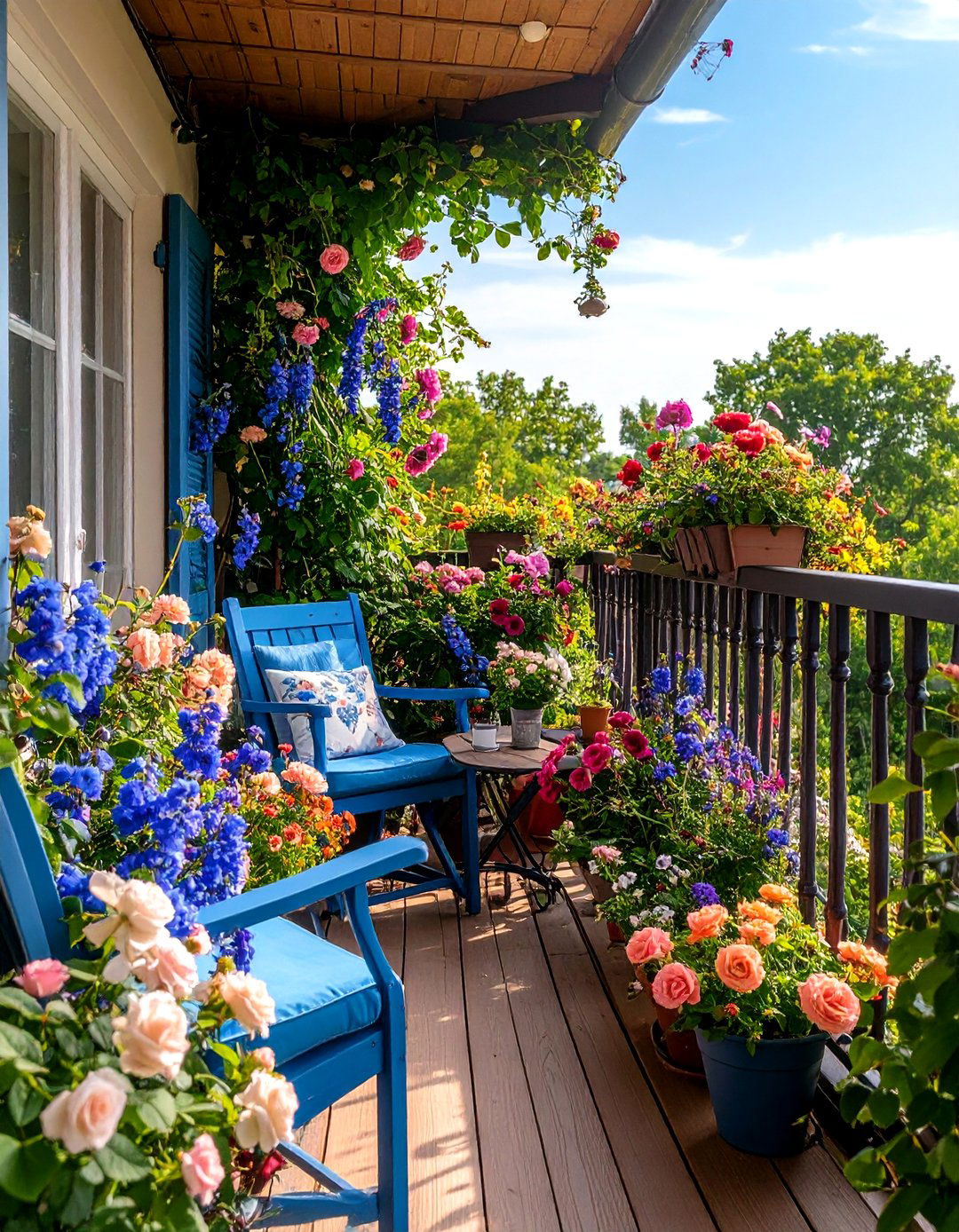
Developing a charming cottage garden aesthetic brings romantic, informal beauty to urban balcony spaces. Cottage garden styles bring charm with climbing roses and pastel blooms that create romantic, informal aesthetics . Create fairytale cottage garden vibes using mixed plantings and whimsical decorative elements . Include traditional cottage plants like hollyhocks, delphiniums, sweet peas, and climbing roses that provide height and fragrance. Add colorfully painted wooden furniture and natural woven rugs for authentic cottage charm . Use vintage containers like old watering cans, wooden crates, and galvanized buckets as planters. Create homemade wall gardens by mounting flowerpots in wooden frames for additional cottage character . Layer plants at different heights and allow some controlled spillover for the relaxed, abundant look characteristic of cottage gardens.
Conclusion:
Creating a thriving balcony garden transforms any outdoor space into a personal oasis that enriches daily life while connecting you with nature. These gardening approaches represent enduring principles that reflect a deeper understanding of our environment and well-being . Whether you choose vertical growing systems, aromatic herb collections, or seasonal vegetable gardens, each approach offers unique benefits that enhance both your living space and lifestyle. The key to successful balcony gardening lies in matching plants to your specific conditions, utilizing vertical space effectively, and selecting the right containers and growing systems for your needs. By embracing these sustainable approaches, you can create gardens that enrich your life while positively impacting the environment . Start with one or two ideas that resonate most with your interests and available space, then gradually expand your balcony garden as you gain confidence and experience. Your balcony garden will become a source of fresh food, natural beauty, and peaceful retreat that brings joy throughout every season.


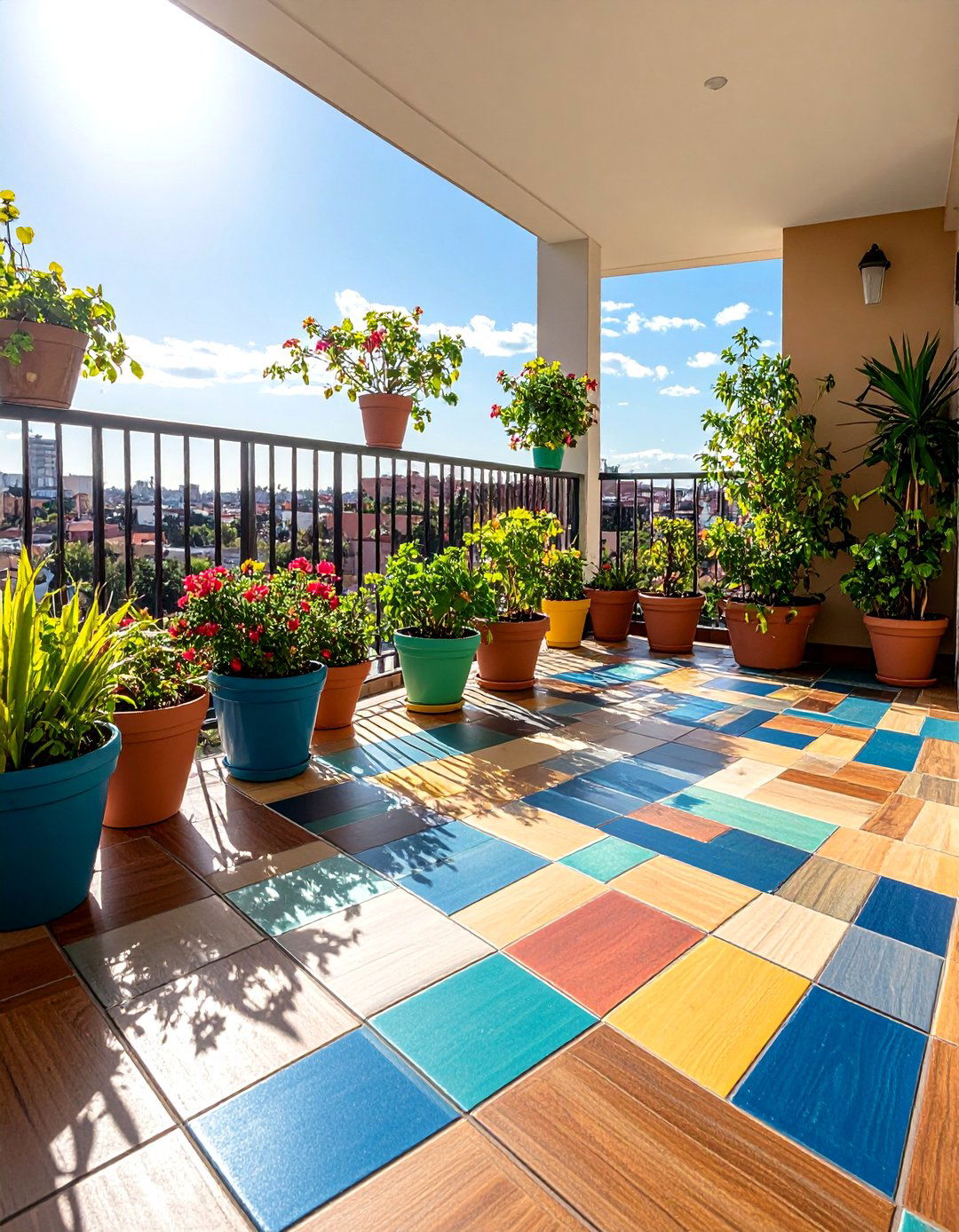

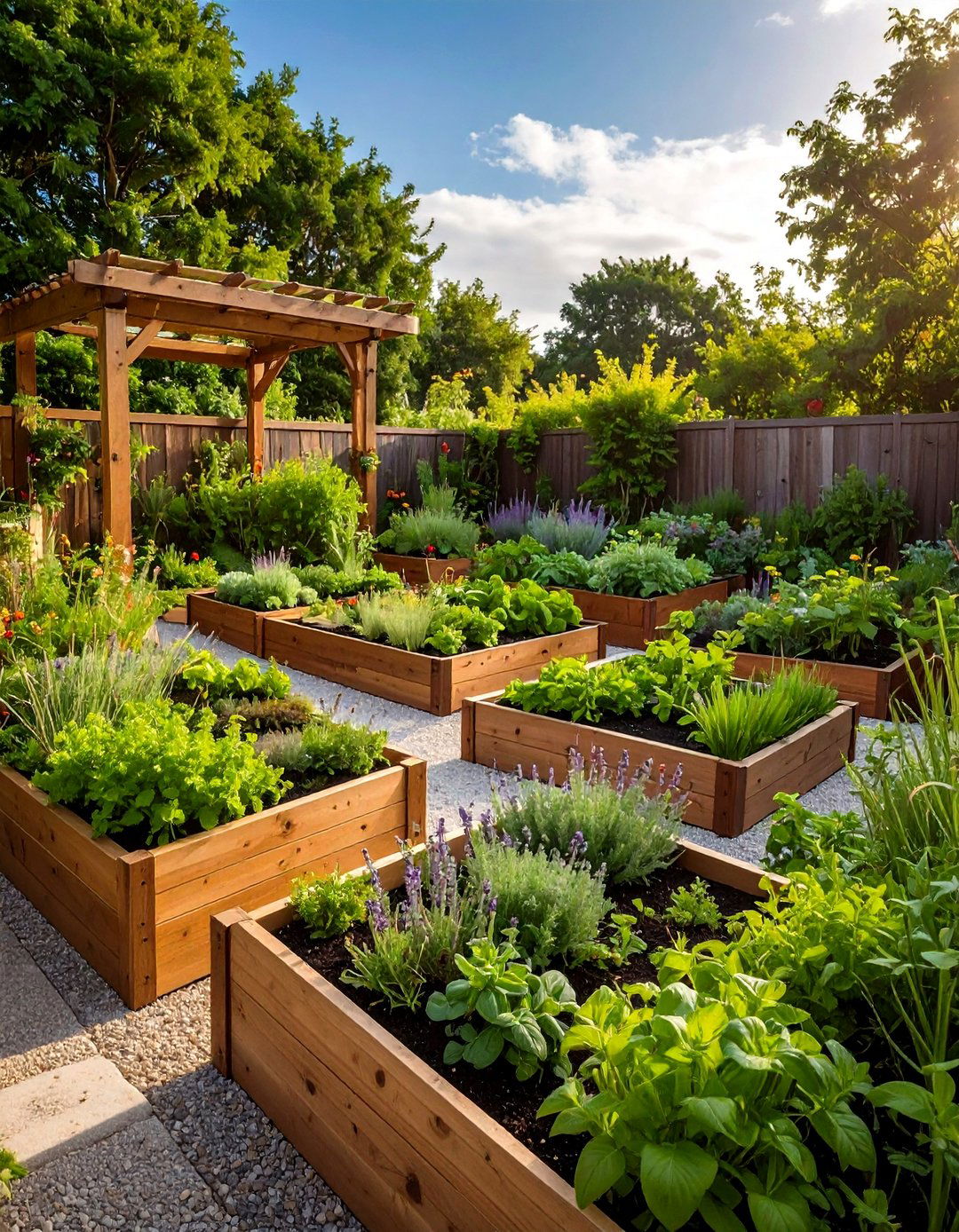
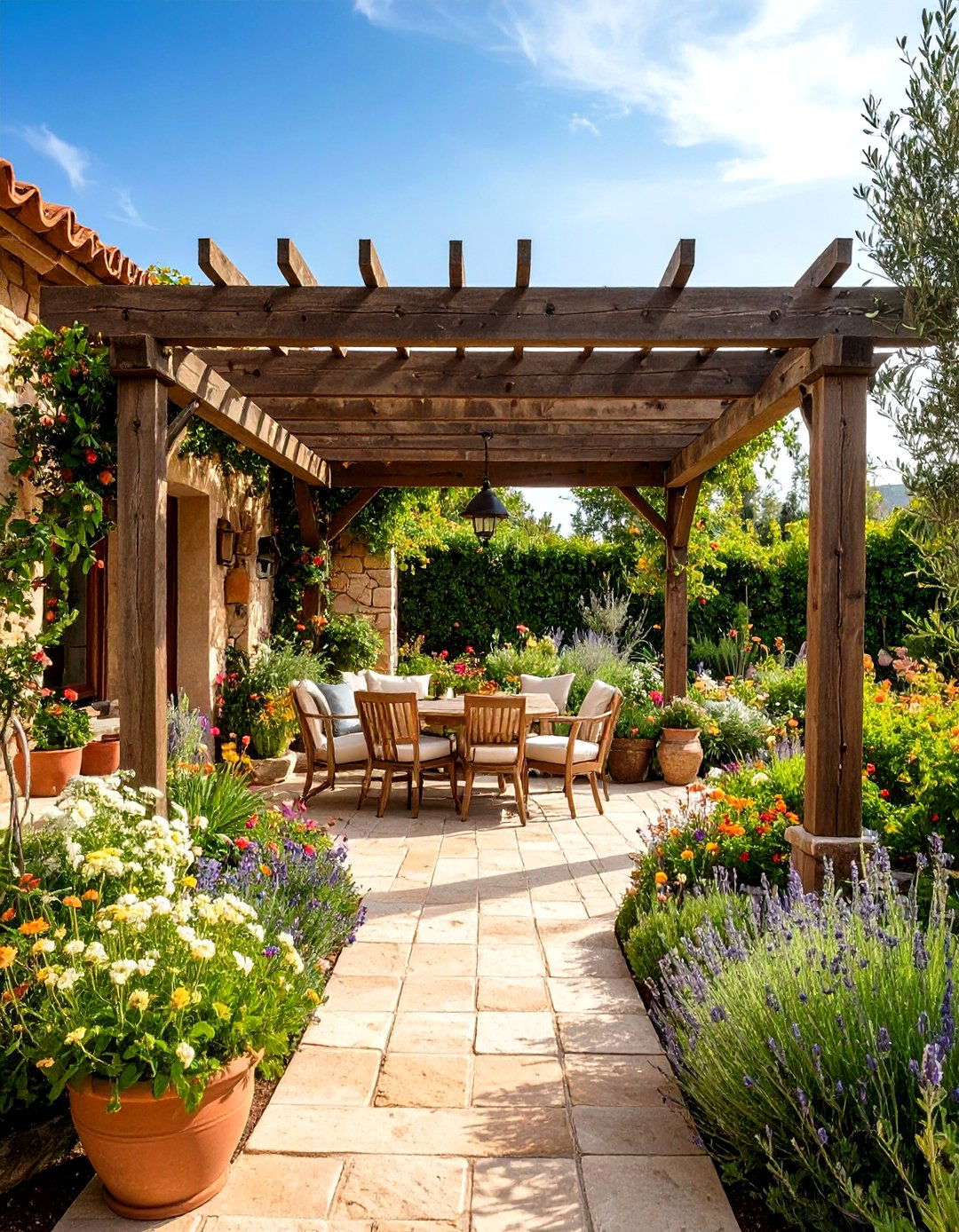

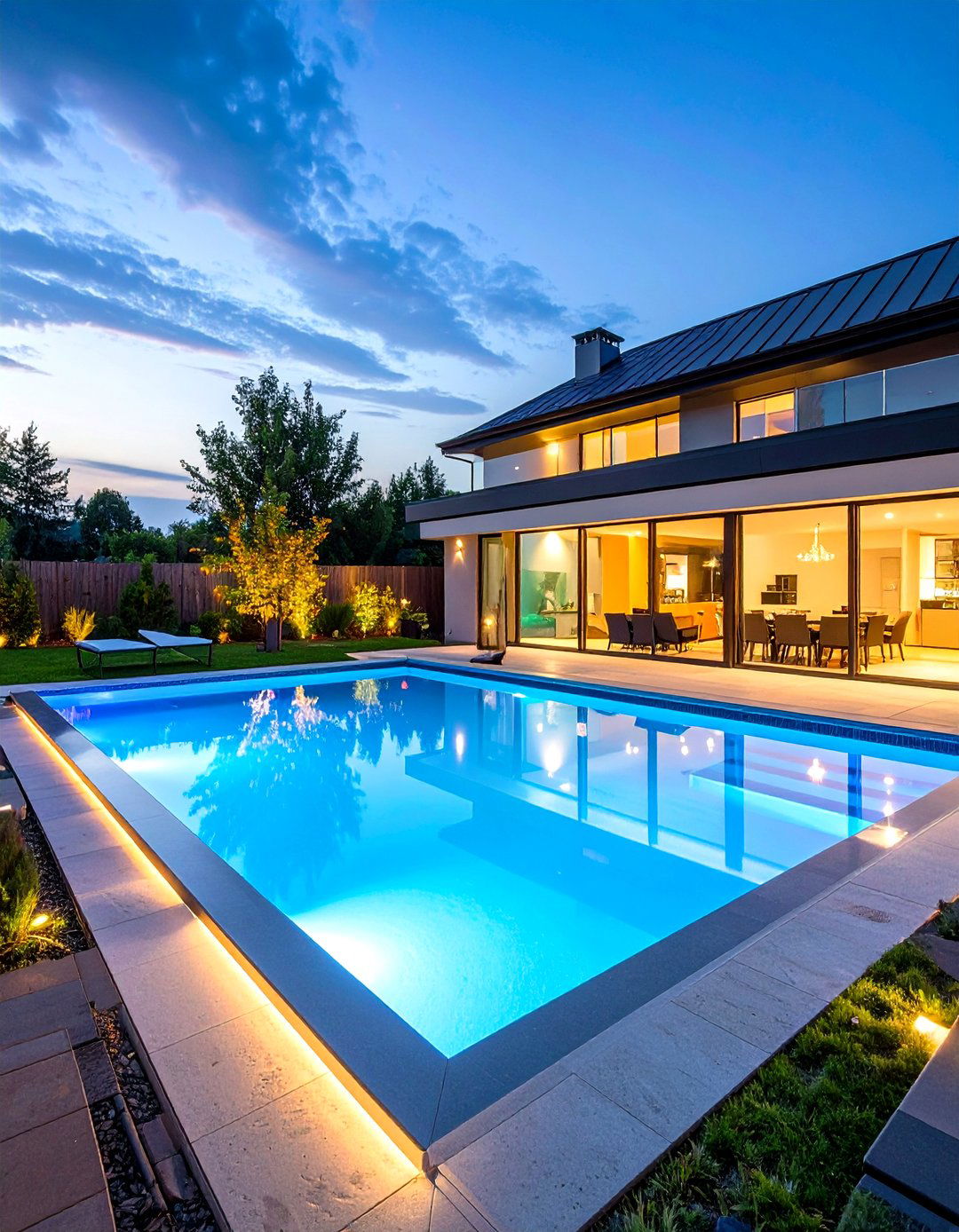
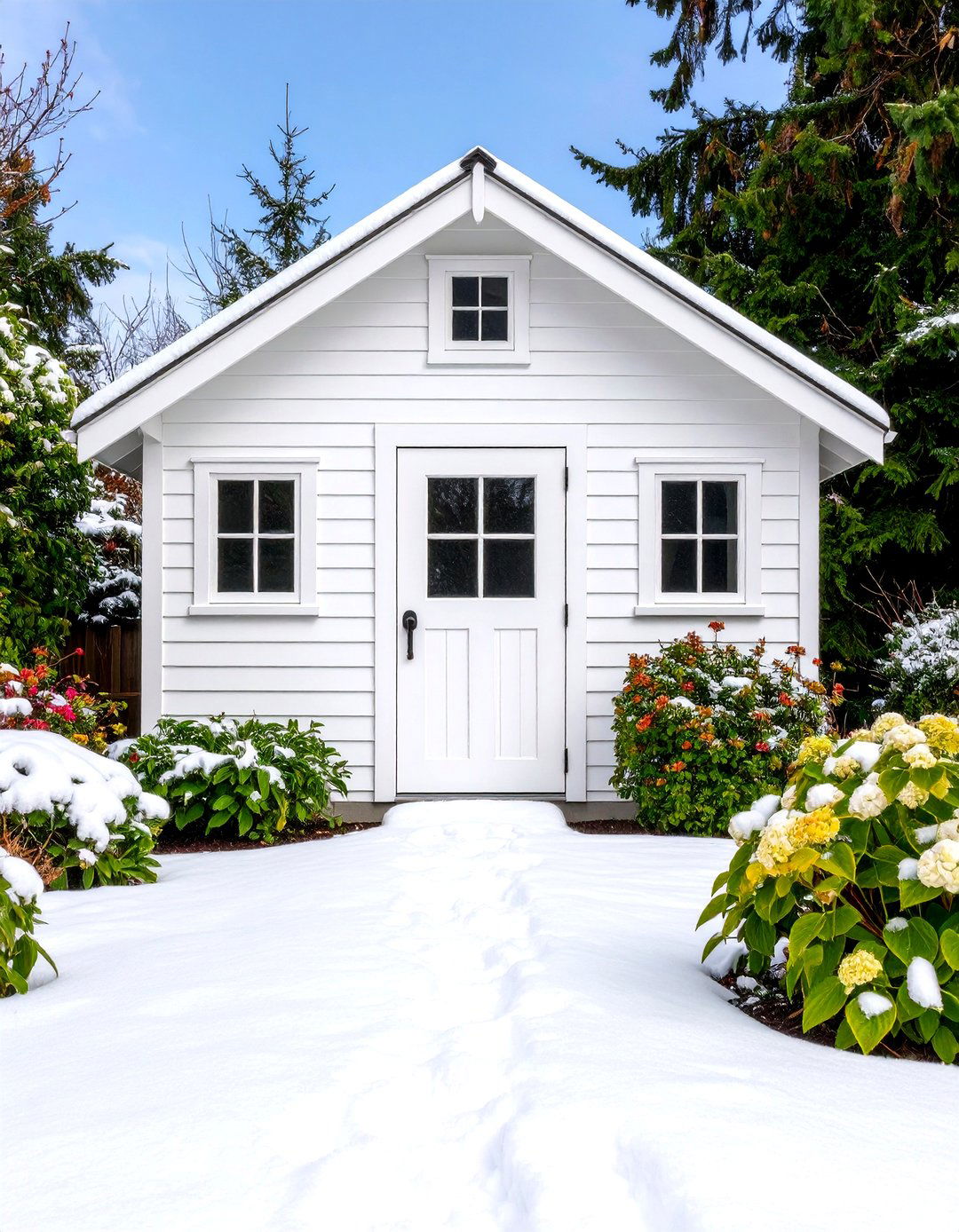
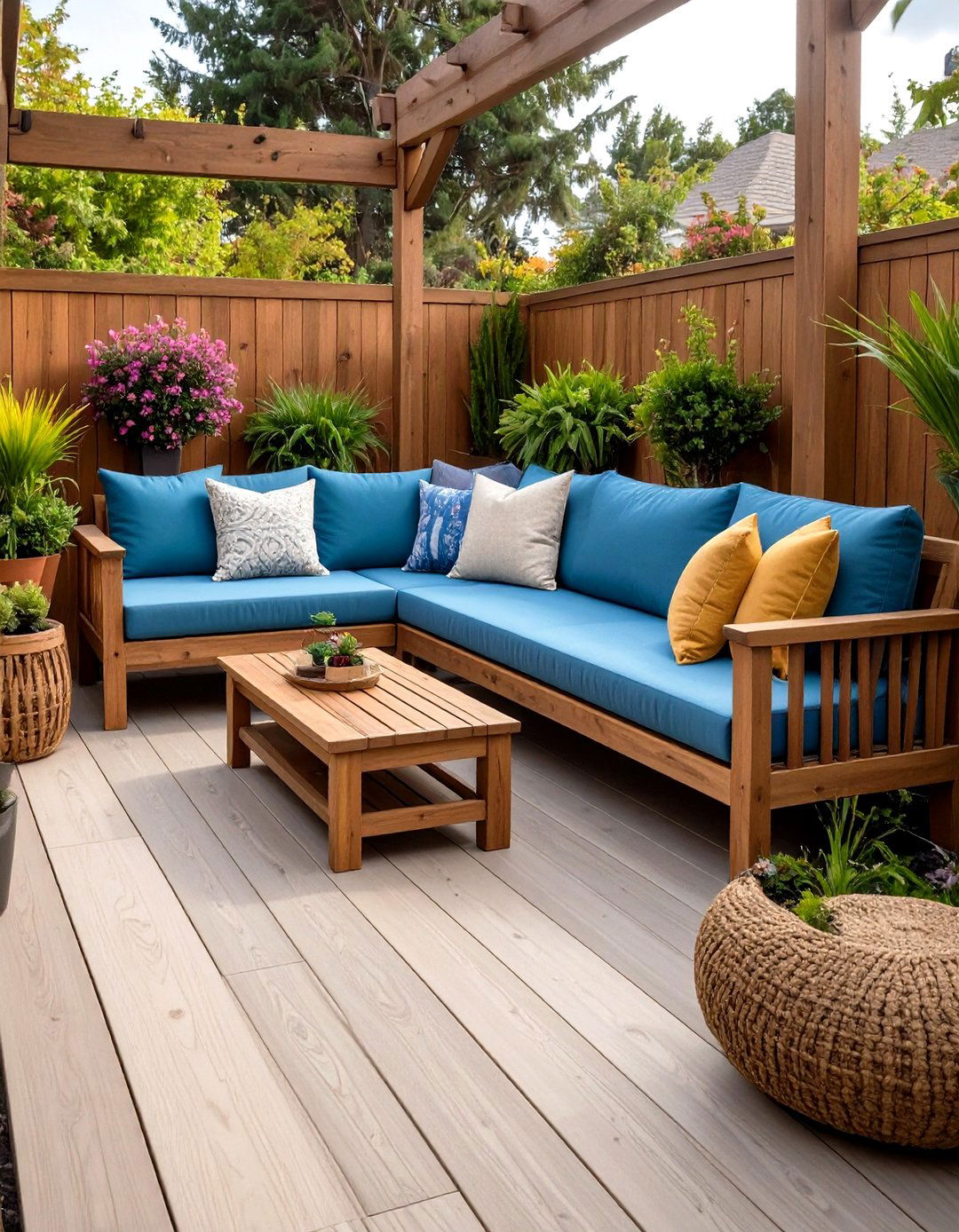


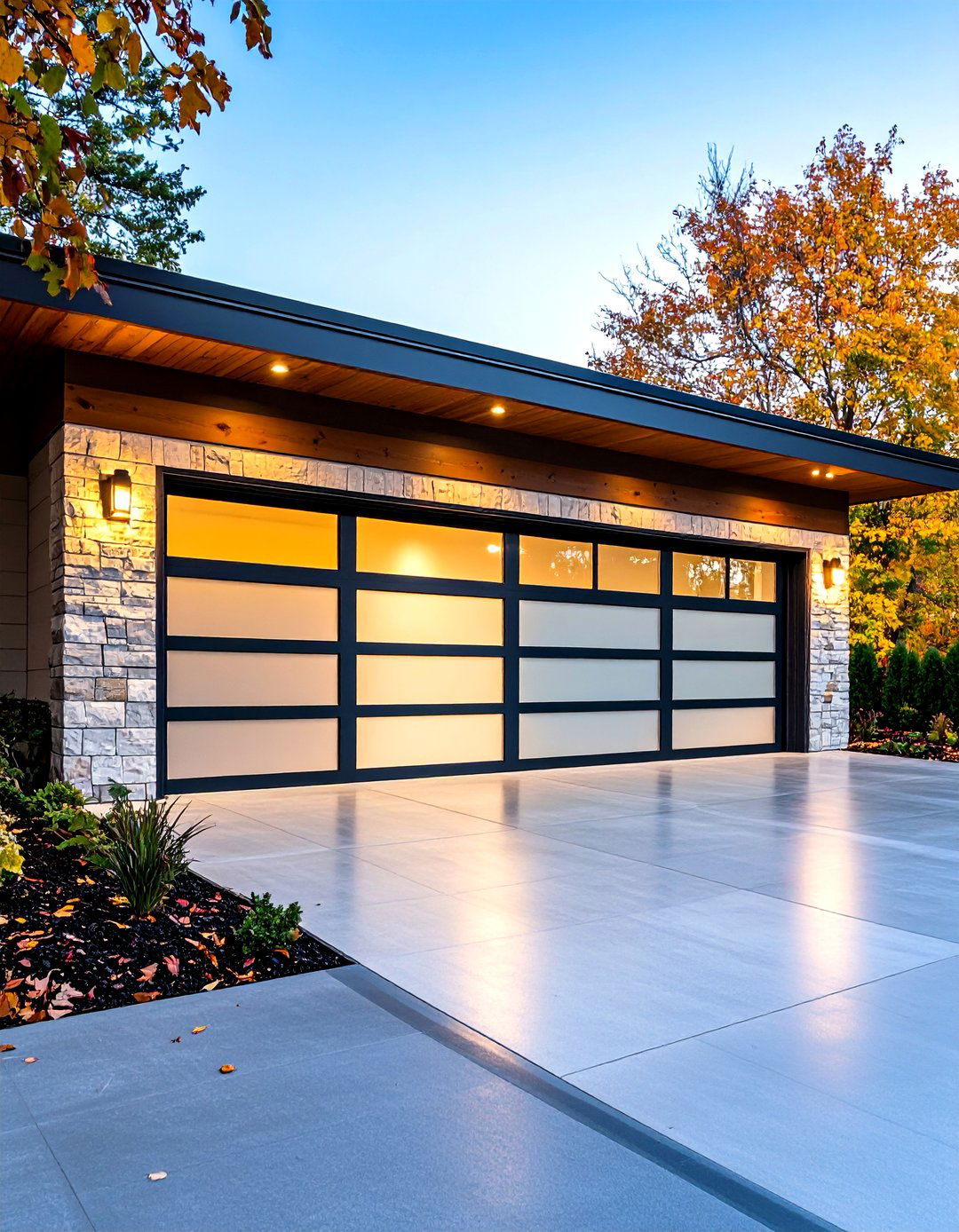
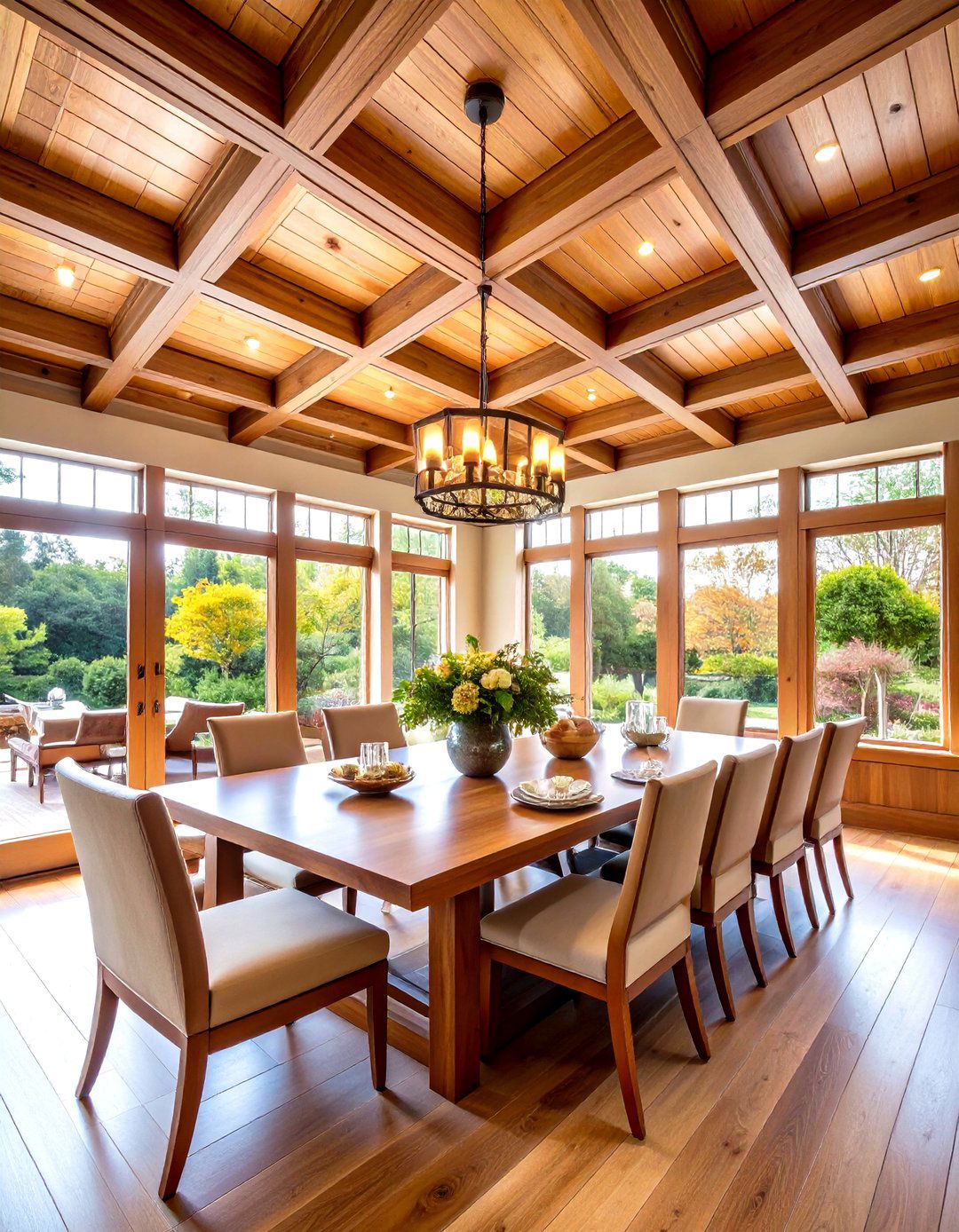
Leave a Reply